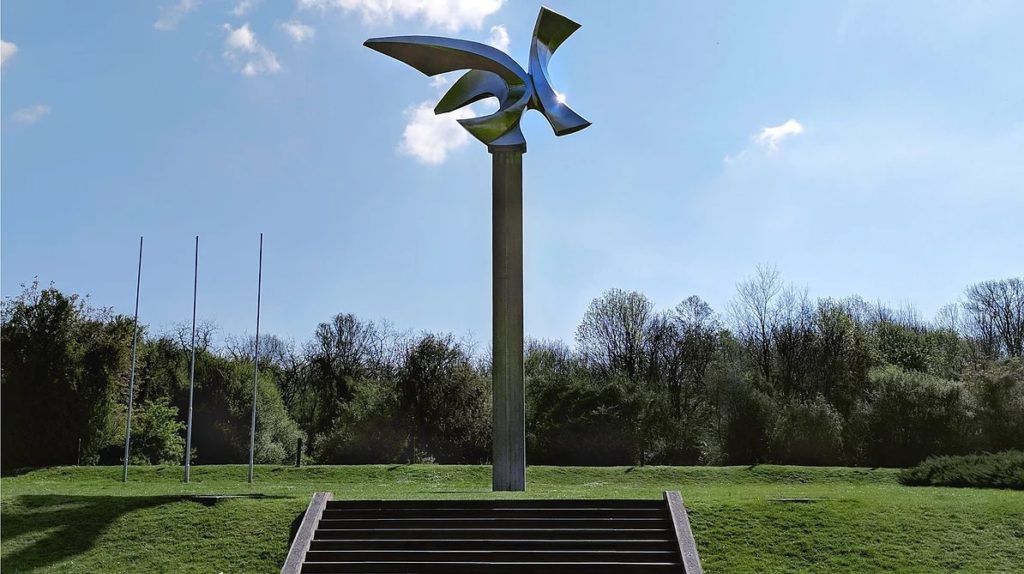
It was turbulent at the “battlefields of history” on Saturday, October 6 2012. An identical slogan: “Serbia is committed to fostering history and tradition” was concurrently heard in two different places. Tradition was being honoured that day in Oplenac, where the remains of Prince Paul Karadjordjevic, his wife and son were laid in the crypt of the church of St. George. At almost the same time history was being remembered at the Jajinci memorial park during the commemoration for those who were executed there during the Second World War. The Serbian President Tomislav Nikolic spoke at both events, conveying a message that both are equally important to us. However, the difficulty is that these two places of remembrance carry opposing messages, that they foster conflicting traditions and celebrate two very different, irreconcilable histories.
And what are these irreconcilable differences? In answering this question it is necessary to do a brief historical summary. Prince Paul supported the accession of the Kingdom of Yugoslavia to the Tripartite Pact. In 1945 he was convicted for this. Following the political changes in 2000, the perception of this event had been completely reinterpreted, and the leading voices of the Serbian public belonged to those who believed and still believe that joining the Tripartite Pact was the most sensible solution of the time. They claim that if the Pact had been preserved, Yugoslavia would have avoided the horrors of war. The coup that took place on March 27, two days after the signing of the Pact, has been characterized in post October 5 Serbia as unreasonable, irrational and suicidal. It was through these systematic preparations that the public in 2011 received the news of Prince Paul’s vindication with almost undivided approval. Laying his mortal remains in Oplenac was a natural consequence of this rewriting of history.
Continuing with history, one will recall that during the Second World War between 68,000 and 80,000 people were executed in Jajinci. They were brought there for execution from concentration camps of Staro Sajmiste, Banjica, Topovske Supe and Misiceva Ciglana. Belgrade was a unique European city at the time having four concentration camps. These camps held almost the complete Jewinsh population of occupied Serbia, which with extraordinary efficiency in just half a year became “Juden frei”. They were killed because Third Reich`s core ideology was racism, the belief that there are more and less worthy forms of life and that the “inferior races” were polluting the world. Jews were killed because the Nazi system was able to carry out its fundamental idea that “better” people have the right to destroy those of “lower quality”. This was in essence the ideology of Nazi Germany.
In Jajinci, beside the Jews, executed were all those who disagreed with this ideology, who believed it was worthy and necessary to fight against such ideas, and that these ideas were at odds with humanity – people who believed that making alliances with individuals promoting such concepts represents the end of humankind. Executed in Jajinci were the victims of the Third Reich, a key element of the Tripartite Pact. And to come to the point – in Jajinci were executed political opponents of Prince Paul. Those who did not believe it was wise to make alliances with evil. All those who did not believe in the Pact.
I know that those who today celebrate Prince Paul want to say that the victims of Jajinci wouldn’t exist had the Pact he signed remained in effect. What does this actually mean? First of all, they are expressing confidence that Hitler would keep to his part of the deal and that Yugoslavia and its people would be left unharmed during the Second World War. Then they say that this is acceptable. They also say that the three secret annexes that accompanied the Protocol of Accession to the Tripartite Pact were reasonable, in particular the one by which Germany, Italy and Japan grant Yugoslavia access to the Aegean Sea and the port of Thessaloniki. They likewise believe that the citizens of Yugoslavia would peacefully observe the transport of Nazi troops through the country, as it had been outlined in the secret annex. And finally, in essence, they say: that it was wiser to go along with criminals than become their victim.
So what exactly did the two remembrances held on October 6 2012 mean? What was their message? Were they a part of the national reconciliation process that has been propagated for years? And what is then the message of national reconciliation? That both sides can be right? It seems to me, however, that such national reconciliation infers one thing: a rehabilitation of the allies of the Third Reich and sending a message to all the victims that they had, with due regret, fallen for the wrong cause. Because the victims of Jajinci were in this way clearly told that that they should have been a bit more quiet and, together with Prince Paul and Generals Draza Mihailovic and Nedic, wisely wait for the war to somehow end. And that it wasn’t very important how the war would end. And that fascism and anti-fascism were equally acceptable for us. And that it was just important that we get through the war in the best possible way. And that for this purpose we would not hesitate to use any available means or join any side.
It is because of this that we can say with certainty that on October 6 2012 it again became obvious that Serbia is confidently and steadfastly marching on the wrong side of history.
The article is dedicated to the memory of Professor Vojin Dimitrijevic, who was a persistent fighter against the rehabilitation of fascism.
Peščanik.net, 10.10.2012.
- Biografija
- Latest Posts
Latest posts by Dubravka Stojanović (see all)
- Posthumni život Ustava iz 1974. - 23/02/2024
- Prošlost dolazi - 30/11/2023
- Prošlost dolazi, 2. deo - 24/11/2023


